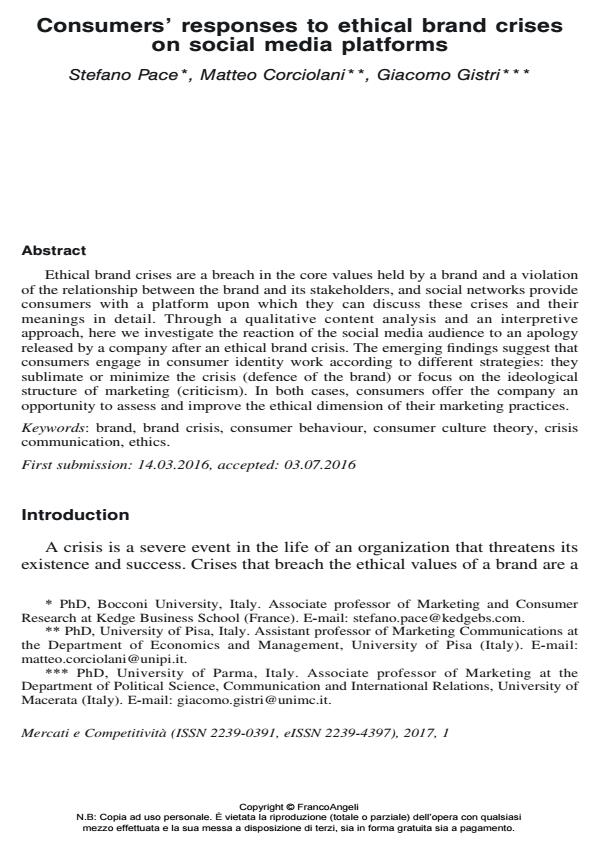Consumers’ responses to ethical brand crises on social media platforms
Journal title MERCATI & COMPETITIVITÀ
Author/s Stefano Pace, Matteo Corciolani, Giacomo Gistri
Publishing Year 2017 Issue 2017/1
Language English Pages 17 P. 141-157 File size 93 KB
DOI 10.3280/MC2017-001008
DOI is like a bar code for intellectual property: to have more infomation
click here
Below, you can see the article first page
If you want to buy this article in PDF format, you can do it, following the instructions to buy download credits

FrancoAngeli is member of Publishers International Linking Association, Inc (PILA), a not-for-profit association which run the CrossRef service enabling links to and from online scholarly content.
Ethical brand crises are a breach in the core values held by a brand and a violation of the relationship between the brand and its stakeholders, and social networks provide consumers with a platform upon which they can discuss these crises and their meanings in detail. Through a qualitative content analysis and an interpretive approach, here we investigate the reaction of the social media audience to an apology released by a company after an ethical brand crisis. The emerging findings suggest that consumers engage in consumer identity work according to different strategies: they sublimate or minimize the crisis (defence of the brand) or focus on the ideological structure of marketing (criticism). In both cases, consumers offer the company an opportunity to assess and improve the ethical dimension of their marketing practices.
Keywords: Brand, brand crisis, consumer behaviour, consumer culture theory, crisis communication, ethics.
Stefano Pace, Matteo Corciolani, Giacomo Gistri, Consumers’ responses to ethical brand crises on social media platforms in "MERCATI & COMPETITIVITÀ" 1/2017, pp 141-157, DOI: 10.3280/MC2017-001008